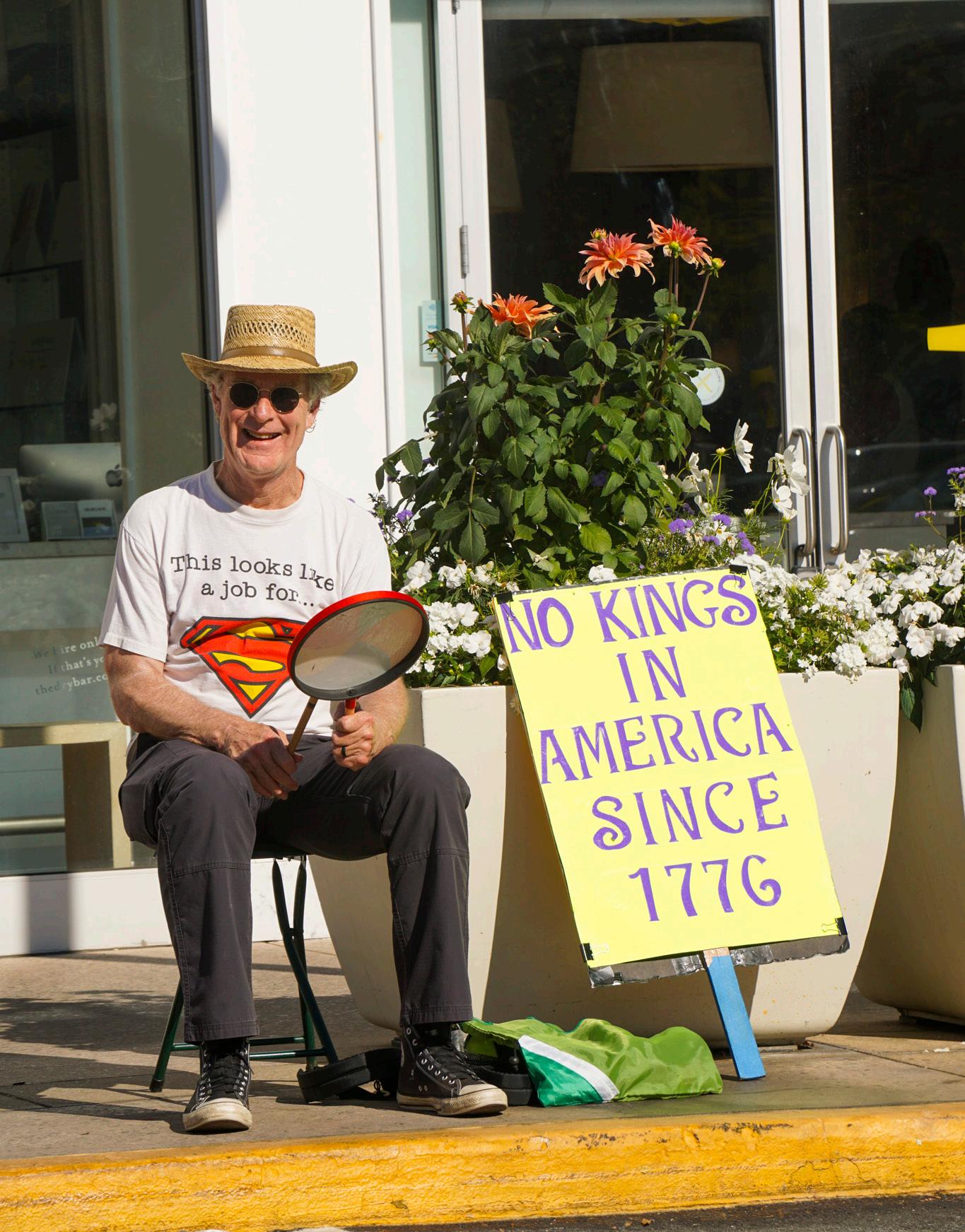
REDRAWING THE LINES
pg. 18
ROBLOX: UNDER FIRE
pg. 21


pg. 18
pg. 21
2025 Volume 8 Issue 1
The goals of Anthro magazine, Palo Alto High School’s activism-focused journalism publication, are to highlight the impact of local and global activism on the Paly community, serve as a safe place to discuss these issues, and ensure that student voices are heard. Along the way, we hope to promote diversity, inclusion and respect, use respectful language and not engage in or support hate speech or the targeting of individuals.
Dear Readers,
We are excited to present the first edition of the eighth year at Palo Alto High School for Anthro magazine, where we look at the world through our activism lens by reporting on advocacy in the local community.
For the first time, Anthro will be presenting news briefs to provide readers with a quick glimpse on a range of topics from anti-ICE legislation to homelessness rates in Palo Alto, providing readers with updated information on what has happened in the community in the past few months.
As the Trump administration continues to upend our lives, we channel the growing voices speaking up in our community. “Shouts Among Shoppers” highlights local activism at Stanford Shopping Center and “UC Berkeley Criticized for Trump Cooperation” spotlights the advocacy of local university students.
The stories from this edition also have a strong focus on giving voice to news that directly affects our student readers. Anthro’s editorial presents our staff’s thoughts on the controversy around the reinstatement of a physical education teacher and district transparency around the same issue. Reporter Hadrien de Martel offers coverage on the proposed advanced diploma that has revived debates over students’ academic experiences.
Not to be missed is “Roblox: Under Fire” by Jeshrun Wang, which takes a deep dive into revealing the darker parts of a popular video game that many Paly students play.
We are grateful for your continued support and are thrilled that you’re here to join us for another year. Enjoy Anthro Volume 8.1!
– Editors-in-chief Hadrien de Martel and Mihika Sridhar
Editors-in-Chief
Hadrien de Martel
Mihika Sridhar
Managing Editors
Motoko Iwata
Amily Zhang
Features Editor
Jeshurun Wang
Business Manager
Richard Zhang
Staff Writers
Julia Curtis
Noah Espinoza
Ava Knapp
Alexander Lawson
Priya Tamura
Juni Thurston
Chapin Walker
Artists
Doreen Hou
Chiara Martin
Joy Tan
Joyce Ma Adviser
Paul Kandell


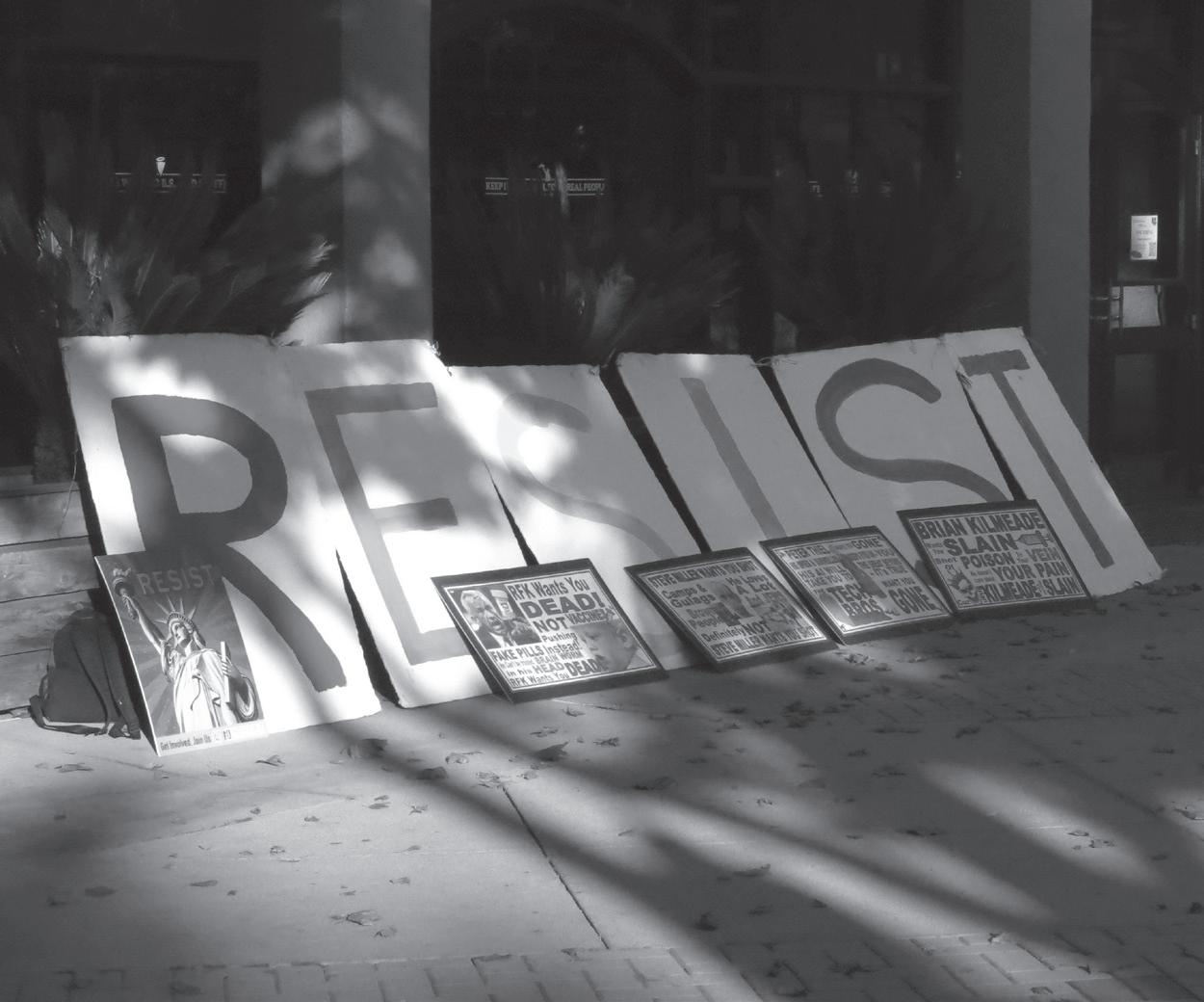
Letters to the Editors
The staff welcomes letters to the editors. We reserve the right to edit all submissions for length, grammar, potential libel, invasion of privacy and obscenity. Send all letters to anthromagazine. paly@gmail.com or to 50 Embarcadero Road, Palo Alto, CA 94301.
Printing & Distribution
Anthro is printed by Folger Graphics in Hayward, California. The Palo Alto Parent Teacher Association mails Anthro to every student’s home. Past issues are available at anthromagazine.org.
Publication Policy
Anthro, a social activism magazine published by students in Palo Alto High School Incubator class, is a designated limited open forum for student expression and discussion of issue of concern to its readership. Anthro is distributed to its readers and the student body at no cost. Please visit anthromagazine.org to view our AI policy and ethics policy.
In the dark
District phone ban
Revising Advanced Diploma
Activists paint street with pride
News briefs
Stanford newspaper sues
District to review sustainability role
Activism around the world
Local activists fighting for community
Shouts among shoppers
Redrawing the lines
Roblox: Under fire


During a protest on Labor Day weekend against the Trump Adminstration a protester holds a sign reading “No Kings in America since 1776.”
The return of middle school Physical Education teacher Peter Colombo has been drawing attention district-wide — and with good reason.
According to the official website of the City of Palo Alto, Palo Alto Unified School District removed Colombo from a teaching position at Greene Middle School following sexual assault allegations against him in 2022. According to the Santa Clara County District Attorney’s Office, the case was dropped in 2023 due to insufficient evidence.
According to public records, Colombo filed a $20 million lawsuit against the district, Colombo v. Palo Alto Unified School District et al. He alleged multiple claims, which were later narrowed to withholding exculpatory evidence and a lack of due process.
Colombo was reinstated as a P.E. teacher at Ellen Fletcher Middle School in August this school year. At the August 19 and September 16 Palo Alto Unified School District board meetings this year, community members voiced their discomfort with the decision. This discomfort has been met with little communication from the district.
A recent incident regarding Emily Ceresnak, a Fletcher student, was shared at the August 19 PAUSD board meeting. The 7th-grade student did not feel comfortable attending P.E. on the first day of class. Her mom, Karen Ceresnak, highlighted her daughter’s experience.
“When she [the student] went to the school mental health and wellness associate, she was questioned with, ‘How long do you plan on doing this?’, then followed up with, ‘You will get detention,’” Ceresnak said. “Instead of being supported, she was met with a raised, aggressive voice and was pressured to explain herself in front of Mr. Columbo when she asked to see her counselor.”
Learning of Colombo’s reinstatement, Fletcher parent Clark Barrett organized a petition in May urging PAUSD to reconsider its decision. According to Barrett, the petition gathered 175 signatures in just four days.
Barrett sent it to the school board, Don Austin and the Fletcher
principal, who were unresponsive to the petition. He was then directed to the district’s HR Director, Herb Espiritu.
“I had a phone conversation with him [Espiritu], and he basically said that the decision’s been made [and] it’s final,” Barrett said. “I talked to several board members and they also said they were sort of personally empathetic, but that there’s nothing [the board] can do because there is this lawsuit.”
When schools stay silent, rumors spread, parents assume the worst, and students may start to wonder if their safety matters. We understand there are legal limits to what the administration can share. Still, privacy can be maintained without sacrificing trust and stability.
“Things are kind of broken,” Barrett said. “What I really wish is for someone to step up and show some compassionate leadership.”
We agree. Compassionate leadership does not require disclosing legal details. Even a brief acknowledgement of the situation would reassure many families and rebuild lost trust.

In a conversation with Palo Alto High School journalism, PAUSD Superintendent Don Austin shared the district’s approach to handling parent and student concerns.
“We have directed all families and students to the principal to discuss their unique questions or concerns,” Austin said. “I have complete confidence in the staff of Fletcher.”
When Anthro reporters reached out to Fletcher’s administration, they declined to comment. Although the Anthro staff does not have visibility on the conversations happening behind Fletcher’s closed doors, we hope students are being supported and given the resources they need.
Conversations behind closed doors are crucial to supporting students and parents, but with many people expressing discomfort, it’s clear that this issue extends beyond Fletcher’s campus.
While we acknowledge that the pending lawsuit is constraining PAUSD, it is essential that community members feel informed and not kept in the dark.
Phones in wooden boxes. Numbered pockets on the wall.
Classrooms across California and classrooms at Palo Alto
High School are marked with this familiar view. The Palo Alto Unified School District adopted a policy this school year in which phones are to be put away at the front of the room before class each day.
According to Paly junior Lily Liu, the policy has helped her and other students stay focused during classes throughout the day.
“Now that we’re forced to put our phones away, we have to pay attention,” Liu said. “So I’ve learned more, which is the good part.”
However, student opinions are not all positive. Junior Johnathan Mazor-Hoofien said that the policy is only effective as being a detriment to focused students.
“It only harms students who are being attentive in class by giving them less resources and less accessible ways to access the internet,” Mazor-Hoofien said. “Kids who slack off in class already have multiple other methods, and it’s not at all a challenge for them to keep slacking off. I just feel like it’s very unnecessary, and it’s one of the many policies that Paly has that completely beats around the bush of what it wants to do.”

The change comes after parent-led movements nationally have pushed for phone ban policies, including groups such as the Distraction Free Schools Policy Project and Smartphone Free Childhood US. Despite this, the support still has not been unanimous, with some parent groups opposing the change due to concerns about accessibility in emergency situations.
Despite seeing some success so far, science teacher Samuel Howles-Banerji said that the policy creates inequity between students with personal Apple computers and students with school-issued chromebooks.
“The piece that we haven’t quite figured out how to deal with is that your computer [Macbook] is essentially a phone as well,” Howles-Banerji said. “My frustration with that is more that it creates inequities, because if you’re using school issued Chromebooks, you can’t do that [phone mirroring], but if you have an iPhone and MacBook, now you can.”
“I wasn’t happy at first, but after a month, I’m kind of getting used to it.”
— BRENDAN LIN, sophomore
The district makes this decision following Governor Gavin Newsom’s signing of Assembly Bill 3216, the Phone-Free School Act, which requires every school district, charter school, and county office of education to adopt a policy limiting or prohibiting the use of smartphones by July 1, 2026.
Among mixed feelings, students are still adjusting to the new policy.
According to sophomore Brendan Lin, he is starting to see the benefits of the policy despite his initial thoughts.
“The phone ban has really improved my productivity during class, because I don’t feel like I ever need to check my phone for notifications,” Lin said.
“I wasn’t happy at first, but after a month, I’m kind of getting used to it.
Howles-Banerji said that he hopes that the policy will continue to evolve to support student needs.
“It [phone ban] is not gonna be perfect, but you have got to start somewhere,” Howles-Banerji said.
The Palo Alto Unified School District is still considering the requirements for the Advanced Diploma program. The requirements will be finalized during the spring according to district officials.
The Advanced Diploma is based on the AP Capstone Diploma which requires students to earn a three or higher on AP Seminar, AP Research, and four other AP classes of choice. In addition to the AP Capstone requirements, students would also need to complete an internship, create an oral defense portfolio, have a qualifying ACT or SAT score, and participate in the Stanford Great Minds speaker series. The program is set to start during the 2026-27 school year.
However, Assistant Superintendent of Innovation and Agility Jeong Choe emphasized that the requirements are still changing.
“The criteria for the Academic Distinction program are scheduled to be finalized by spring,” Choe said. “We are currently gathering valuable input from various groups, including AP Capstone teachers and administrators from all three high schools. We are also collecting feedback at tomorrow’s [Sept. 25] monthly district-wide counselor meeting.”
According to Choe, other requirements such as a year-long project are also being considered.
“We are currently considering various options for students to demonstrate agency through a one-year project, similar to AP Research,” Choe said. “These options include Advanced Authentic Research, Language Certificates, and internships.”

who spoke to our staff in class on Sept. 11, also emphasized that the requirements will be finalized during the spring.
“There won’t be anything formal on that [Advanced Diploma] until the spring at the earliest,” Austin said. “So what you see right now are just drafts.”
Austin also wanted to highlight how the diploma’s primary purpose is to recognize students.

“This is not supposed to be something that people strive for as a competition,” Austin said. “It’s especially something that recognizes people for doing these already.”
This comes amid more demand for academic acceleration and more recognition programs.
“We’ve had so much demand for additional recognition, acknowledgement, achievements, and honestly, I think that we have a job as a district of recognizing
all the amazing academic work our students do,” Austin said.
Still, some students, such as Senior Class President James Park, have concerns about the program.
“I think it could have potential as an award that could motivate students, but there is a general lack of transparency from the district to the parents and students about how it’s going to work,” Park said. “I also don’t see how this would align with the broader long-term goals of PAUSD.”
Additionally, Park shares concerns about the impact the diploma could have on students’ mental health.
“I think that mental health is already a huge issue at PAUSD, and adding another layer of achievement to the parental pressure will not improve things,” Park said.

Agroup of activists chalked local crosswalks and sidewalks with rainbow colors on Sept. 3 outside of three PAUSD middle and high schools to show solidarity with LGBTQ+ students, reigniting the conversation around LGBTQ+ student mental health.
According to one Palo Alto resident who participated in the chalking, the crosswalks were colored by local community activists to support the LGBTQ+ community — and especially students — in a rapidly changing political environment.
“Given the current political climate for members of the LGBTQ community at the federal level, specifically, a group of students and some adults supporting them wanted to let students and community members know that this community [Palo Alto] supports them,” the participant said. “This just felt like a happy thing that we could do that could hopefully bring a smile to some students’ faces … for them [LGBTQ+ students] to know that they’re not alone,”
According to the participant, the group initially decided to stay anonymous out of fear of potentially getting in trouble for the
markings — but ultimately chose to continue staying anonymous to keep attention on the sentiment rather than the group itself.
“It’s not important who’s doing it,” the participant said. “What’s important is that it’s out there that we support all of our LGBTQ students.”
Palo Alto City Council member Julie Lychott-Haimes brought up the chalking Sept. 8 at a council meeting during a conversation about recent student suicides.
Trump administration shut down specialized suicide prevention services for LGBTQ+ youth as part of the Substance Abuse and Mental Health Services Administration this June.
Paly junior Kit Wendling said that despite the chalking being simple, it remains an important display of activism.
“It sends messages that there are still communities, there’s still support”
“Because LGBT youth in particular seem to be quite at risk, it appears that some folks have taken to chalking some city sidewalks or crossings with rainbow colors to show our LGBT youth, ‘We see you, you’re not alone, you matter, ’” Lychott-Haimes said.
— MARC TOLENTINO, Social Justice Pathway English Teacher
In connection with both LGBTQ+ mental health and federal policy toward LGBTQ+ issues, according to NPR, the
“I feel like it’s a way to show that there is support for the community during this Trump administration,” Wendling said. “I feel like that’s really powerful.”
Marc Tolentino, Social Justice Pathway English teacher, said that the action is a welcome demonstration of support in a tough time for the LGBTQ+ community on a national level.
“It sends messages that there are still communities, there’s still support, there are still people rooting for you,” Tolentino said. “That’s even more important now than it was a few years ago, especially with the laws that are being passed.”
Following California Gov. Gavin Newsom’s signing of California Senate Bill 627, more commonly known as the No Secret Police Act. The law requires all law enforcement officers to uncover their faces when on duty.
The Department of Homeland Security said that it would not abide by California SB627.
“[This is a] unconstitutional legislation that strips law enforcement of protections in a disgusting, diabolical fundraising and PR stunt,” the DHS stated on X.
Immigration and Customs Enforcement officers will be required to uncover

their faces when doing raids starting on Jan. 1, 2026. This bill was enacted in response to the growing criticism of Immigration and Customs Enforcement agents who have masked their faces during operations.
Despite potential pushback from the federal government, according to a CBS News article, Newsom is adamantly against ICE officers covering their faces while conducting raids in California.
Newsom said in a statement, “As this authoritarian regime expands its reach into every aspect of daily life … California will continue to stand for the rule of law.”
Outside of the Santa Clara County Government Center on Monday, a group of residents chanted against Measure A, a proposal which aims to increase sales tax by five-eighths-of-a-cent to counteract an estimated billion dollars of lost federal revenue annually.
On Nov. 4, residents of Santa Clara County will vote on the proposal which, according to county officials, will be critical to preserving healthcare access and other services provided by Medicaid funding.
In July, Congress passed a plan to gradually cut one trillion dollars in funding for Medicaid over the next decade as a part of President Trump’s “Big, Beautiful Bill.” The tension over healthcare in Congress has led to a government shutdown, with Democrats refusing to vote without a reversal of Medicaid cuts.
One in four Santa Clara County residents rely on Medicaid. Measure A attempts to create funds to continue medicaid services to counteract the absence of government support.
However, the coalition against this proposal argues that taxes are already far too high and that increasing the sales tax rate only has negative impacts for seniors and families.
Currently, the local sales tax rate is 9.125%, with the proposal aiming to bring this number up by 0.625%. This would bring cities with their own sales tax add-ons, such as Milpitas and San Jose, to an overall sales tax rate over 10%, making basic products like food and gasoline much less accessible to communities.
On Sept. 9, Chief Executive of Downtown Streets Team Julie Gardner announced that it was “impossible to continue running the organization in a financially sustainable way.” Gardner cites a loss of millions of dollars in public funding along with a changing financial and political landscape as reasons for the closure.
Downtown Streets Team, a local nonprofit that helps unhoused individuals find jobs and get housing in exchange for volunteer work, is planning to fully close its doors by the end of October.
The organization operates in 16 different communities across Northern California, such as San Jose, Palo Alto, Redwood City, Berkeley, and Santa Cruz
Last year, Downtown Streets Team raised $17.4 million, significantly more than the $10.3 million raised in 2020. Roughly 90% of funding is said to have come from government grants. Meanwhile, the Trump administration is attempting to implement restrictions on up to $683 million in California homeless grants. Along with this, the administration has proposed steep funding cuts for housing and homelessness programs in the upcoming federal budget, putting other organizations similar Downtown Streets Team at risk.
Time will tell if the closure of Downtown Streets Team is a sign of future shutdowns, but the organization has said they are planning to work with other providers to ensure homeless residents still receive crucial services, including housing vouchers and stipends for food, clothing, medicine, and transportation.
According to a new report published by Santa Clara County, the number of unhoused residents in Palo Alto has more than doubled since 2023, rising from 187 to 399. This 113% increase is based on data collected in January of this year. Although the report indicates that other cities still have homeless populations larger than Palo Alto’s,

no other city in the report experienced growth of the same magnitude.
Palo Alto’s unique increase in unhoused residents is closely aligned with recent estimates from the city which projected that the number of vehicle dwellers had doubled since 2023. The report notes that the increase in RV residents is “more prevalent in the northern part of Santa Clara County, with the biggest increases in Mountain View, Santa Clara, and Palo Alto.” Currently, according to the report, 76% of Palo Alto’s unhoused residents live in RV’s.
Palo Alto is the only city in the report that didn’t put more unhoused individuals in shelters. The report shows that only 19 unhoused individuals in Palo Alto live in shelters, the same number as the previous 2023 report. Meanwhile, Mountain View saw its population of individuals in shelters increase from 562 to 879 between the two reports.
The report increases city pressure to address recent growth in homelessness.
University of California Berkeley is facing backlash following confirmation that the university gave the names of 160 students, faculty and staff to the Trump administration upon request in September.
The request came as part of a joint investigation that the Department of Education and Department of Justice conducted over allegations that the university was permitting antisemitism
on campus following protests over the Israel and Gaza conflict.
Critics say that this investigation fits into the Trump administration’s broader crackdown on free speech in American universities. Additionally, many believe that the administration is wrongly interpreting activism, including not by students, against Israel as antisemitism.
The United Auto Workers (UAW)
Local 4811, is a union representing over 48,000 workers including those at UC Berkeley. They released a statement on Sept. 18 condemning UC Berkeley for giving up the names.
In the statement, the UAW said that the University’s compliance with the Trump administration only erodes trust in school as a whole. Addionally, it puts students and workers UC Berkeley from in danger.
Coordinators offered prizes to volunteers participating in California’s annual Coastal Cleanup Day—a statewide event where volunteers clean up trash in waterways to save marine life from the effects of plastic— last weekend, where creeks were kept 23% cleaner than the previous year.
Santa Clara County alone saw a 50% increase in volunteers across 56 sites since 2024. They collected 25,300 pounds of trash.
Nicholas Ingram, Creek Connections Action Group Chair, is hopeful for
the future of the creeks after the surge in volunteers.
“These are the highest numbers we’ve [the Santa Clara Valley Water District] seen since the pandemic,” Ingram said.
One of these volunteers was Palo Alto High School junior, Madalena Buxton, who showed up to help clean Adobe Creek from litter.
“I wanted to be able to do something to help the environment, even if it’s something small, like picking up a few pieces of trash,” Buxton said.

The Stanford Daily newspaper is suing members of President Donald Trump’s administration over claims that Trump’s immigration policies have hindered student journalists’ right to free speech.
According to the lawsuit filed on Aug. 6, Stanford Daily Publishing Corporation et al. v. Rubio et al., many Stanford journalists are self-censoring their stories and trying to take down past articles associated with being pro-Palestinian due to fear of Trump deporting international students.
There have already been instances of this happening. Mahmoud Khalil, a Palestinian activist and former Columbia University graduate student, had his green card revoked and was then placed in a detention center. According to an Economist article published on March 13, Trump later confirmed the reason on Truth Social, explaining that this was just the first arrest of students who are “engaged in pro-terrorist, anti-Semitic, anti-American activity.”
The Foundation for Individual Rights and Expression helped the students file a lawsuit against the federal government.
In an email to Anthro Magazine, Colin McDonell, an attorney on the case, explained that the reason behind taking on the case was to protect the students’ First Amendment right.
“We filed this lawsuit so that the government — whether the Trump administration or a future administration—cannot deport people for their speech,” McDonell said. “Nobody should be locked up or deported for speaking their mind. But that’s happening today. So we’re suing to stop it.”
The editors released a “letter from the editors” on Aug. 7. They explained their staff’s concerns after Stanford University announced that six students had had their visas revoked.
“When the publication of an op-ed is grounds to put a student in a detention center, it is clear that the freedom of the press and the freedom of speech are under attack,” the letter said.
They also urged the university to release a statement to ensure “the safety of students, faculty and staff.”
FIRE took on the case after they read The Stanford Daily’s letter, which expressed the newspaper staff’s distress by publishing stories advocating for Palestinians.
McDonell said, “We reached out after reading their [The Stanford Daily’s] letter from the editors, which discussed how international students’ willingness to write for or speak to ‘The Stanford Daily’ had been chilled out of fear that the government would target their immigration status.”
FIRE is hoping the lawsuit results in a court ruling in favor of free speech for everyone, including non-citizens.
“As part of that, we’re seeking the first ruling that the First Amendment prohibits the government from deporting noncitizens for speech protected by the Constitution,” McDonell said.
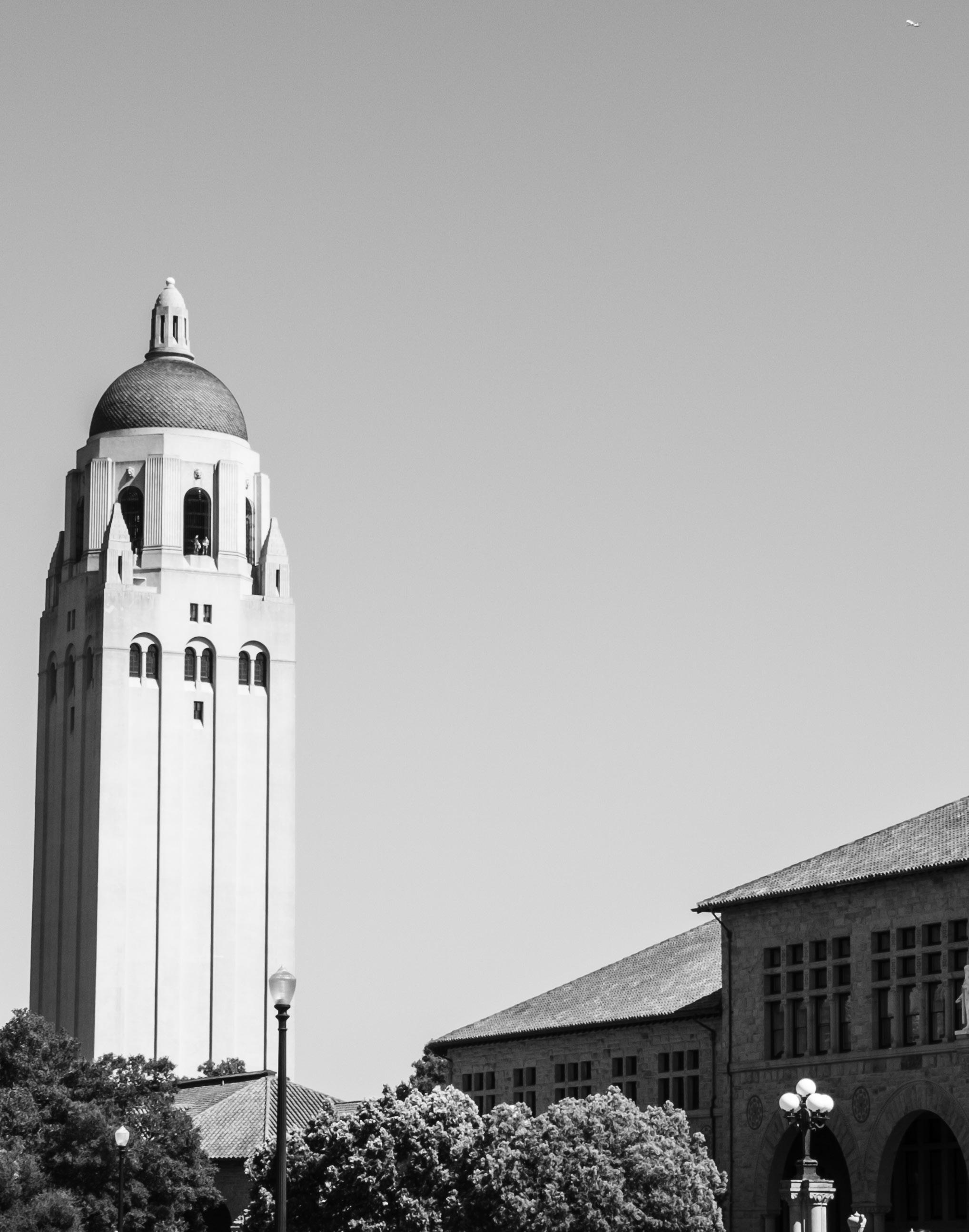
Photo by ALEXANDER LAWSON

STUDENT ADVOCATES — Palo Alto Environment and Medicine Club members meet with district board member Shana
The club’s presidents
pande and Avroh Shah along with their members are one of the student climate activist groups advocating for the role to hire a sustainability program manager. “This is important because it not only shows that our hard work made a difference but it is a start to hopefully something that encourages student voices,” Deshpande said.
After students spent months advocating for the sustainability position to be reinstated, the Palo Alto Board of Education will consider hiring a sustainability program manager at an October school board meeting.
According to a Palo Alto Online article, the board has created a job description calling for applicants with a bachelor’s degree in environmental or administration-related subjects and a minimum of two years of experience in a sustainability field.
community response.
Students continued to advocate for a reversal of the change, resulting in this major success for student climate activists.
“Due to this accomplishment, I hope more people will get involved in speaking out about what they believe in”
— Anika Deshpande, co-president of Paly’s environment and medicine club
The board had previously decided to cut the position, leading to a negative
Anika Deshpande, co-president of Paly’s environment and medicine club and one of the many activists who advocated for the change, told Anthro that this step is an important landmark.
“This is important because it not only shows that our hard work made a difference, but it is a start to hopefully something that encourages student voices,” Deshpande said.
According to Nicole Loomis, an environmental science teacher at Paly, she hopes that the role will bring about critical change in the district.
“I would like to see more rigorous adherence to trash collection policies, and a shift to more sustainable materials used in the cafeteria, such as compostable utensils and containers, pumps for condiments with compostable cups, and fruits and veggies that are not packed in plastic,” Loomis said.
Ultimately, Deshpande hopes that this first success will encourage students to consider speaking up for the environment.
“I hope that through this position, students can get their voices heard about their environmental concerns,” Deshpande said. “Due to this accomplishment, I hope more people will get involved in speaking out about what they believe in.”
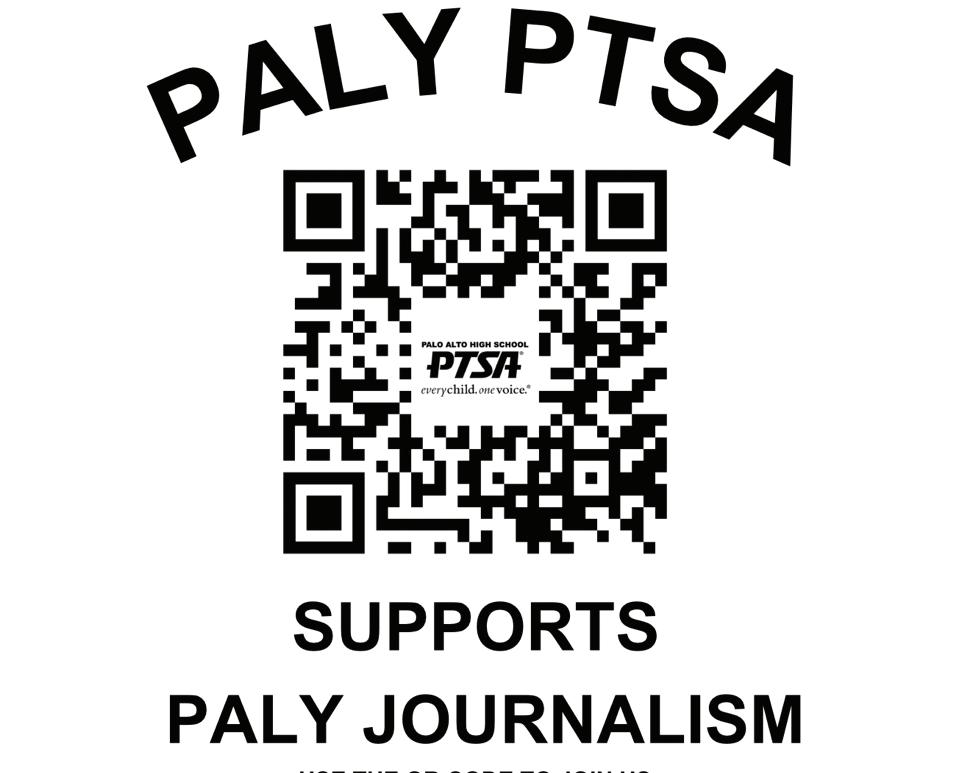

From medical records to daily reminders, we’ve got every aspect of pet care covered. Keep your furry family healthy and happy with comprehensive health tracking, smart reminders, and seamless sharing with caregivers.


France saw sweeping protests under the “Block Everything Movement” when protesters blocked highways, gas stations, train lines, and schools across France on Sept. 10 according to NBC News.
The French Interior Ministry reported that there were over 812 protests nationwide, with around 175,000 protest-

Nepal’s government reversed its ban on Facebook, Instagram, and more than 20 other social media platforms after protests near the capital left at least 19 people dead and over 400 injured on Sept. 8, according to the New York Times.
In Nepal, countless migrant workers depend on social media to send money and stay connected with their families
Political

Prabowo Subianto, Indonesia’s President, announced that certain state-funded perks for politicians would be rolled back following mass nationwide protests on Aug. 31. According to BBC these protests were sparked by parliamentarians receiving a monthly pay increase of 50 million
ers participating.
The movement started online over the summer by far-right circles due to proposed budget cuts exceeding $50 billion, with healthcare funding among the areas targeted.
This resulted in authorities deploying 80,000 officers, making hundreds of arrests, and using tear gas to disperse crowds according to NBC News.
back home, making these platforms an essential part of daily life. Mostly teenagers and young adults led the protests, which began in response to the ban but grew as frustrations over corruption and economic inequality intensified.
According to the NYTs during the protests, the police responded using rubber bullets, water cannons, and live ammunition.
The protests then spread to other parts of Nepal, including Janakpur, a city south of the capital.
Ultimately, the protest forced the government to lift the social media ban, giving Nepalians the ability to connect with family members abroad.
rupiah (around 3,000 USD), which is almost 10 times the minimum wage in Jakarta.
Many of these protests have created heavy conflict between the locals and the authorities. One example of this is when a 21-year-old ride-share driver, Affan Kurniawan, was killed by a police vehicle during a protest near the capital, further fuelling the protesters anger.
These protests have been seen as being the first test for Prabowo’s presidency since he obtained this position in October.

Sydney’s Pro-Palestinian March
Tens of thousands marched peacefully across the Sydney Harbour Bridge in a pro-Palestinian protest on Aug. 3 according to BBC. Despite heavy rain, the police estimated that around 90,000 people participated in the March for Humanity, demanding a ceasefire.
According to BBC, the protest consisted of numerous families, including many with young children, who came out to support this peaceful demonstration. The rally was organized by Palestine Action Group, an activist organization committed to supporting freedom and justice in Palestine.
The request for the protest had initially been rejected by the police on the Sunday prior due to safety concerns about traffic, but the New South Wales Supreme Court overruled this decision, allowing the protest to proceed.
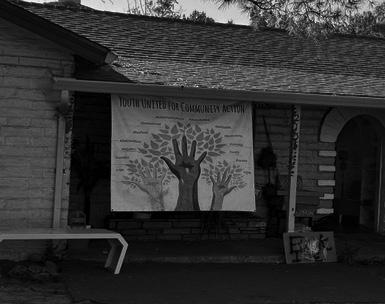
LOCAL AWARENESS Youth United for Community Action’s sign hangs over the organizations building in East Palo Alto. Filiberto Zaragoza, a campaign organizer with YUCA, said that the organization has become an important tool for keeping community members aware of local issues. “Through YUCA, we have been able to keep our residents informed on what is going on within the community,” Zaragoza said.
Based in East Palo Alto, Youth United for Community Action (YUCA) is a grassroots organization that aims to empower young people to fight for environmental and social justice. One way it achieves this goal is by organizing protests, such as a protest in July against East Palo Alto Ordinance 10.40, which would restrict and add a fee to street parking — something protesters said would disproportionately affect lower-class and multi-family homes. YUCA also consistently hosts town halls focused on informing the community of local environmental issues. According to YUCA’s official website, YUCA has supported and trained over 650 low-income youth of color since 1994 to get involved in local issues impact-
ing their communities — such as housing availability, environmental sustainability and gentrification. Filiberto Zaragoza, a campaign organizer with YUCA who joined the organization in his sophomore year at Menlo-Atherton High School, said that the program made him feel like he could make a real difference in his community.
“At YUCA, you get real say in the decisions made within the space, and there is always a focus on education that wasn’t taught within a school’s curriculum,” Zaragoza said. “The space continues to empower me to make substantial change within the community, and now my role is to guide the next generation of youth to create their own change.”
Led by Sacred Heart Community Service, the Rapid Response Network in Santa Clara County responds to the presence of U.S. Immigration and Customs Enforcement agents across Santa Clara County with a stated mission “to protect immigrant families from deportation threats.” Concerned community members can call the Rapid Response Network’s hotline to report sightings of ICE or to receive assistance if ICE detains a loved one. According to Sacred Heart Community Service’s official website, The Rapid Response Network sends trained responders and community members to protect immigrants by conducting documentation to prove legal status or providing connections to legal support. The Rapid Response Network provided such assistance on Aug. 25 at Stanford Hospital. The network was founded by Sacred Heart Community Service in 2016 and has been officially listed as a community resource by the City of San Jose.
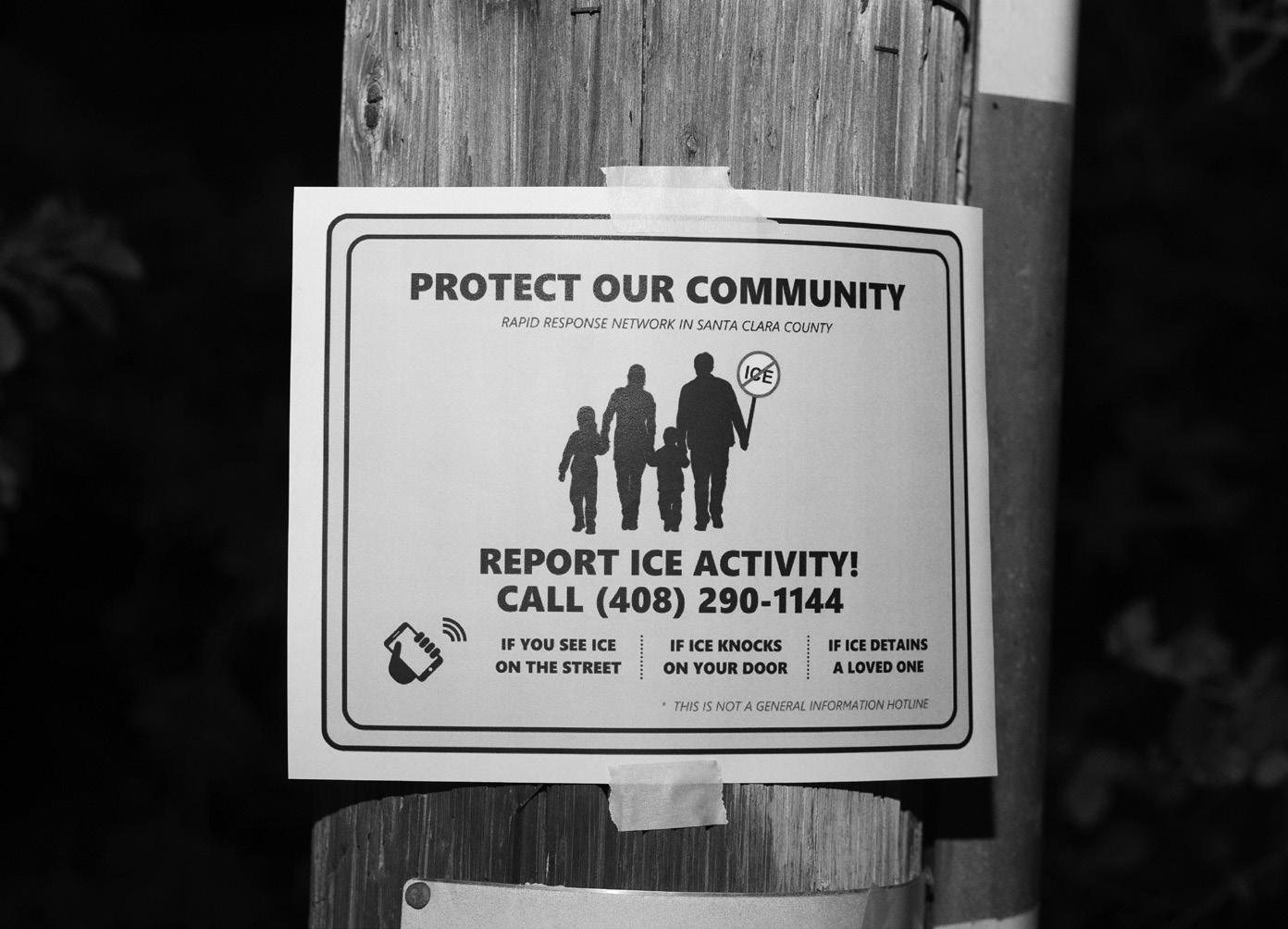
Meeting 5 p.m. every Sunday at the corner of Town & Country since December 2023, Vigil4Gaza has been consistently rallying in support of the Palestinian territory. The group’s recent “Stop Starving Gaza” campaign is protesting what, according to the World Health Organization, is an ongoing famine in Gaza. More than half a million Gazans were in active starvation, according to a WHO report from August. The group has also raised over $60,000 for HEAL Palestine, a humanitarian nonprofit organization that facilitates the evacuation of Palestinian Children to the United States to receive medical care. One organizer of Vigil4Gaza, Michelle Higgins, said that despite the weekly rallies at Town & Country being what the
group is most known for, its work is varied.
“We’ve shown films, we’ve had book clubs, we’ve had marches downtown, so we’ve done a lot of different things,” Higgins said.
Higgins said that as a whole, the main goal of the group is to raise awareness for the humanitarian crisis in Gaza.
“We can’t change the laws, we can’t change U.S. policy directly, but what we can do is really kind of force people to think about it,” Higgins said. “Palo Alto is a very wealthy place, and just for a moment at least, they have to see that this is happening and that our government is completely complicit in the starvation and the genocide that’s happening in Gaza.”
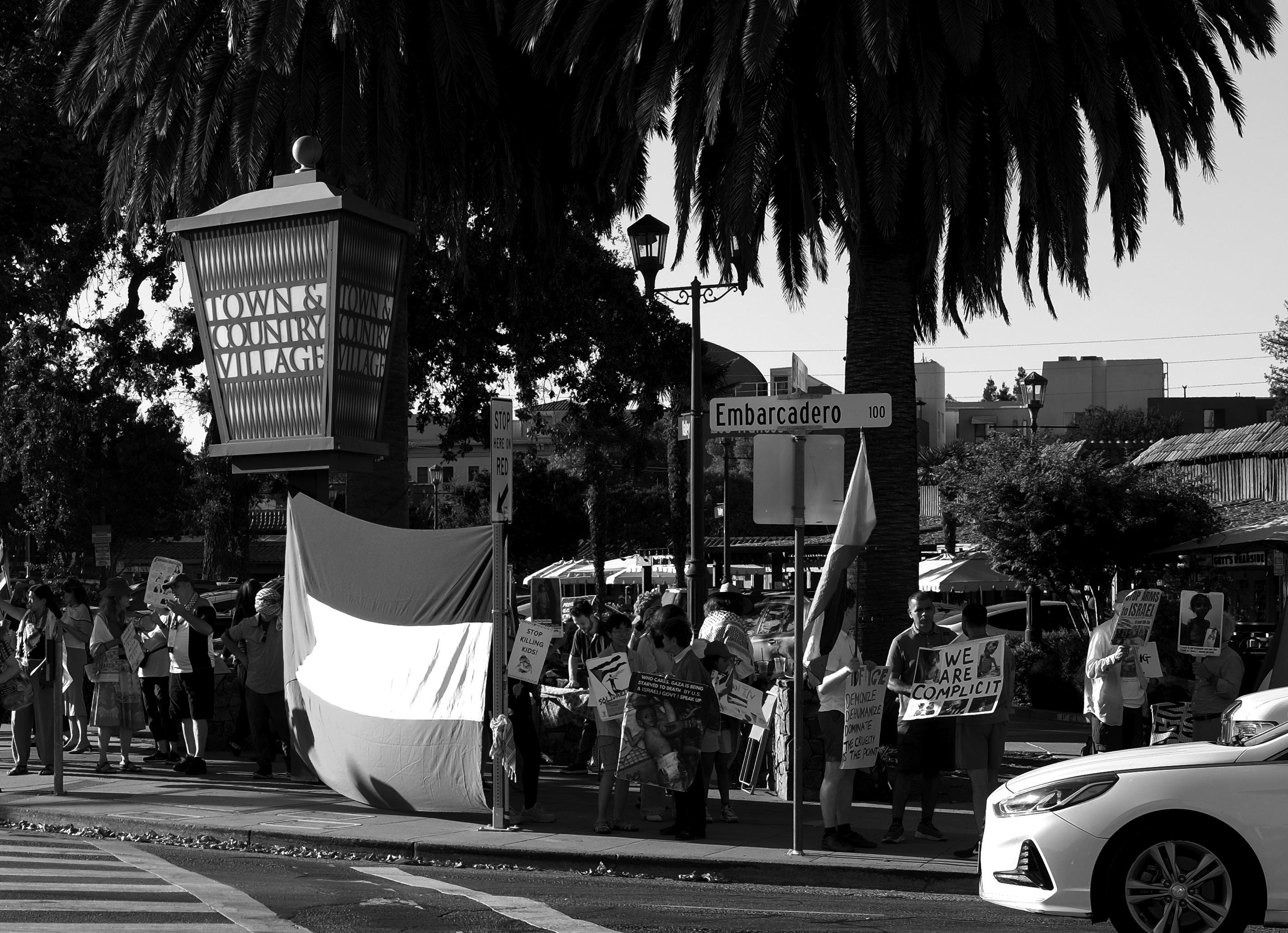

— Ruth Robertson, organizer of the Raging Grannies, stands with a group member holding the organization’s signature sign. Robertson said the group collaborated with “The Wolves” for the Labor Day protest to draw attention to part-time hiring practices at some stores.“These stores here [at Stanford Shopping Center] don’t hire full-time purposely to not have to give benefits,” Robertson said. “If the people in the community don’t have healthcare, it hurts the whole community.”



Protestors shouting “Yes on Prop 50” and “Show me what democracy looks like” echoed throughout Stanford Shopping Center on Labor Day as part of the nationwide protest for worker rights and democracy. In addition to the group at Stanford Shopping Center, hundreds of other protesters lined the streets of El Camino advocating for greater representation for the working class. According to Scott Herscher, a protest organizer for “The Wolves”, the location for this protest was specifically chosen to highlight the contrast between the shopping center and the demonstrators’ message. “StanfordMall is in the heart of Palo Alto and the consumers who are coming to this mall need to have their awareness raised,” Herscher said. “They’re [Stanford mall consumers] not the working class. They employ all the workers so they need to realize our democracy is hanging by a thread and everything that they do to weaken workers’ rights, also weakens democracy.”
PAY GAP (RIGHT CUTOUT) — A protester with “The Wolves” rallies a crowd near the Tesla store. Scott Herscher, the lead organizer of “The Wolves”, said that people who don’t attend the protests should still be involved and educated. “Read a book, read an article and pay attention,” Herscher said. “See what the federal government is doing. Every single day, it seems like they’re doing something else to take away rights to consolidate their own power. I would assume the majority of people in Palo Alto want to live in a democracy.”
TAX THE RICH (LEFT) — Protester Timothy Gould marches with the crowd through Stanford Shopping Center. Gould said people impacted by labor rights should refrain from investing in Tesla. “Don’t buy a Tesla, instead invest in a Honda, Volkswagen or just use public transportation to get around,” Gould said. “I want to support all labor rights and reach all audiences.”
(FAR RIGHT) — Protestors begin marching, chanting and singing into the center of Stanford Shopping Center. Protestor Emma Follman said that she attended this protest to advocate for positive values that the world is currently lacking. “The world needs more love, compassion and kindness,” Follman said. “We can see that when world leaders fail to follow those values, we have devastation and death and cruelty. The way to fight back is with solidarity and community because we really need to fight for each other and for a better future.”


Afew dozen protesters march in Palo Alto on a Friday evening in mid-Sep
A man with a megaphone calls, “Show me what democracy looks like!” The crowd behind him responds, “This is what democracy looks like!” Some protesters brandish American flags or rattle cowbells, while others hold picket signs. Signs urge passersby to “vote yes on Prop 50”.
The rally on Sept. 19 was organized by the local group Stand Up for Science and Sanity and encouraged the community to vote for Gov. Gavin Newsom’s new act, which aims to in crease Democratic congressional power through new district maps. The maps would deliberately redistribute voters between new boundaries to maximize Democratic representatives.
Stand Up for Science and Sanity Founder Carol Peyser, a board-certified physician and psychiatrist in Menlo Park, created the organi zation in March to raise a community response against recent government initiatives. Peyser said President Donald Trump’s administration poses a real threat to American ideals.
“We need to get opposition up if we are go ing to save our democracy,” Peyser said. One way to do this, she says, is by supporting Proposi tion 50.
Stu Weiss, an environmental scientist who attended the protest, shares similar rea soning. He said there is too much at stake not to act.
“I wouldn’t normally support it [partisan gerrymandering], but these are not normal times, and we have to fight back any way we can,” Weiss said.
Many people do not associate gerryman dering with fighting for democracy. In fact, many people consider the practice undem ocratic because it entails the deliberate cre ation of districts to minimize certain groups’ voting power.
If the practice is so corrupt, why are peo ple chanting its praise through the streets?
According to Bruce Cain, a professor of po litical science at Stanford University, there are two kinds of gerrymandering: partisan and bipartisan.

“Gerrymandering means drawing the [Congressional district] lines to political advantage,” Cain said.
According to Cain, bipartisan gerrymandering makes both parties’ seats safer, while partisan gerrymandering makes both parties’ seats less safe, but gives one side an advantage. Partisan gerrymandering requires spreading voters from a party’s most secure districts across opposing districts, giving the party a chance to win
The main reason partisan gerrymandering is rare, despite being legal in most cases, is that it requires a unique political climate to be worth the risk.
“It makes one party have a slight advantage in getting more seats, and it does that by, ironically, making seats more competitive,” Cain said. This is the kind of gerrymandering under serious eration—and is raising protests—in California today. But the gerrymandering conversation this year did not start in California.
Trump called for Texas to redraw its congressional districts to win more congressional seats for the Republican Party in the state in August 2025. The Texas legislature approved the new district maps lat-
According to the California governor’s website, Newsom responded by announcing the Election Rigging Response Act, which would allow California to redraw district maps with the intention of counteracting the shift in Texas. Because Texas’s maps are projected to give five seats to the GOP, Newsom’s act aims to flip five California seats to democratic representatives. The new maps would be ef-
Though Texas’s district maps were immediately changed, California’s act must be voted on in a special election this November before maps are adopted, due to the state’s tighter restrictions
Another safeguard employed in California is the California Citizens Redistricting Commission, a nonpartisan group in charge of redrawing district lines at the turn of each decade. Under the Election Rigging
Response Act, the commission would regain control of congressional map creation in 2030.
So why is California considering disregarding its standard procedures, which are in place to protect democracy?
The last time California executed a partisan gerrymander was in 1982, under the direction of the late John Burton, who was the chair of the Democratic Party. Cain worked with Burton in 1981 and 1982 to draw the gerrymandered congressional districts.
“So why did we do it? Because we had Reagan coming in, and people were almost as scared of Reagan as they are currently of Trump,” Cain said.
Cain said that California’s proposed deviation from the nonpartisan commission and application of this pointed political strategy is a direct result of the Democratic Party’s position regarding the president.
“Democrats are uniformly opposed to Trump and see him as a threat to the country—not just in terms of policy, but in terms of this sort of autocratic drift that we’re in,” Cain said. “He seems to be marshalling power for himself and trying to undermine elections.”
Cain argued that when the stakes are high, the government cannot always adhere to idealistic systems.
“Sometimes you have to suspend democracy,” Cain said. “That’s what emergency powers are. You have to suspend it during wars. You have to suspend it when we have hurricanes. We can’t just wait for all the normal procedures.”
Justin Cronin, a U.S. History teacher at Palo Alto High School, brings a different perspective to the issue. Cronin considers gerrymandering that disproportionately represents any demographic to be unethical. He believes the practice should be outlawed completely.
“It is supposed to be ‘people pick the politicians’, not ‘the politicians pick the people’,” Cronin said.
According to Cronin, if the Election Rigging Response Act passes, Republicans in the Central Valley and Northern California will be hurt. These areas will see district changes where historically Republican-governed areas are handed off to Democratic representatives.
“Many of the people in this state will not have true representation,” Cronin said.
According to the Fair Elections Center, this lack of
Woman protests against redistricting at Labor Day protest. Photo by Amily Zhang
Community members gather in Downtown Palo Alto at a Stand Up For Science and Sanity rally. Photo by Noah Espinoza
Text by NOAH ESPINOZA
Art by CHIARA MARTIN


representation creates a range of issues in affected communities, including dilution of voters’ political power and unfair distribution of resources.
“Gerrymandering also affects resource allocation, depriving certain communities of fair distribution,” the Fair Elections Center said on its website. “The resulting distortion of the voting public not only undermines the integrity of democracy but also fosters a sense of disempowerment among voters, potentially leading to lower voter turnout.”
For Cronin, though, this issue extends beyond the 2026 midterm elections; it raises questions about national ideals.
“Isn’t that the whole thing that this country fought for independence for: the idea of representation?” Cronin said. “It [partisan gerrymandering] seems very counter to what we stand for … in this country.”
However, a different Paly teacher has another perspective on the issue. Social Justice Pathway history teacher Caitlin Drewes considers the California Citizens Redistricting Commission a sign of the state’s thriving democratic values.
“It’s something to be very proud of, and I think it is ultimately what we need across the country for really free and fair elections,” Drewes said.
She believes partisan gerrymandering is unethical and that safeguards like California’s commission are critical.
Today, though, she highlights the importance of context. She says the role played by the president in prompting Texas’s redistricting should not be overlooked.
“Right now we are not on an even playing field, and we have an administration that is actively trying to keep control of Congress in ways that are really unprecedented, [and] borderline illegal,” Drewes said.
Because of this unusual circumstance, she supports the movement to redraw lines for Democratic gain, calling it “a brave response from Gavin Newsom”.
However, Drewes also voices concern that this could be the start of a greater trend in America. She fears seeing increases in both gerrymandering and political polarization.
“By California doing this, we are potentially opening up a can of worms,” Drewes said. “We’re potentially opening up the door to even more chaos.”


Text by JESHURUN WANG
Kate was just 10 years old when she was sent explicit photos from a person she met on Roblox.
Now a Palo Alto High School student, who doesn’t want to reveal her true name, she explains that the incident began when she wanted to level up points in a Roblox game called “Koala Cafe.” She could accomplish this by serving customers or completing various tasks, Kate told Anthro recently.
It was during this time that a game administrator reached out to Kate through the Koala Cafe Discord, an off-game messaging app, and personally approached her. The administrator told Kate that if she wanted to level up in the game quickly, there were alternative ways to do so.
It didn’t take long before she found out what these alternative ways were.
According to “Koala Cafe”’s official Roblox gamesite, the game has a total of 35.1+ million visits as of Sept. 18. The game is labeled as suitable for ages 5+, with a minimal maturity rating from the Koala Association, the official Roblox group for “Koala Cafe,” which has created a variety of other games on Roblox.
was super, super freaked out,” Kate said. “And I told my parents, and they got very upset with the Discord community for al lowing that.”
According to Kate, she felt as if the predator had robbed her of her inno cence.
“I deleted Discord completely be cause I was just so traumatized from it,” Kate said. “I felt as though my innocence had been taken away from me after see ing that,”
Kate said that with the help of her parents, she reported Moon to Roblox itself, but to her knowledge, the compa ny never took any action against Moon. Not only did nothing happen, but when bringing the situation to the attention of the “Koala Cafe” admins. According to Kate, reporting the issue only resulted in Kate being permanently banned from
“I’ve seen things ranging from e-daters to just straight porn drawn in art games.”
— Sophia Lin, freshman
“I joined, and immediately a very high-up person in the community, one of the [admins that is in charge of the Koala Cafe], who went by the name Moon, personally added me.” Kate said, “[He] personally reached out to me, and I was kind of freaking out, because Moon was kind of known as a celebrity [within Koala Cafe].”
Kate said the admin told her that if she wanted more power in the game, rather than playing for hours on end, she could send him something instead.
“And he goes, ‘Well, you can send me something,’ and it’s like, what?” Kate said. “And young me expected him to want me to send him something in the mail from Amazon or something stupid like that.”
The admin then sent an explicit photo of himself to Kate as an example of what kind of pictures he wanted.
“He then attached an image of his penis, which was erect at the time, and I
She says that when she does see them, her reports fall on deaf ears.
“Whenever incidents happen on Ro blox, I always report them, just seeing when people say weird, messed-up stuff, but I very rarely see action where people get banned,” Kate said.
Kate isn’t the only one who has en countered explicit or predatory content. Out of 36 Paly students who responded to an opt-in digital survey, 73% stated they had encountered something explicit or predatory from other players on Roblox.
Roblox is facing numerous lawsuits for what the various plaintiffs say is a fail ure to protect minors on its gaming plat form. In August, the accusations against Roblox came to a boiling point when a Roblox YouTuber known as “Schlep” was banned from Roblox for being a vigilante on the gamesite, violating Roblox’s Terms of Service.
In reality, however, Schlep was actual ly one of numerous YouTubers who were exposing child predators on Roblox’s var




Despite legal allegations, Roblox continues to adamantly claim that it actively bans inappropriate behavior and monitors its games. According to the Roblox Community Standards, the games have no tolerance for children being sexually exploited on its site.
“Roblox has a zero-tolerance policy for the exploitation of minors, including: Any predatory behavior, including attempting to connect with a minor in order to manipulate and exploit them (i.e., grooming),” Roblox Communi-
And yet, lawsuits, parent complaints, and even minors themselves are coming out to testify to what they say they are, the horrors that they have seen or experienced
explicit drawings are not tolerated.
“Inappropriate artwork is not tolerated and will likely result in a permanent ban,” the description states. “[The game] sends the drawings to us to review. Please be respectful and keep this space safe!”
Lin provides her own account of what she has seen. She claims that she has seen explicit drawings happening often for a prolonged period of time.
“It’s been happening for over two years, ever since I’ve been playing these drawing games,” Lin said.
“I felt as though my innocence has been taken away from me after seeing that.”
— Kate, Paly student
Sophia Lin, a Paly freshman, says that she was exposed to explicit themes
“I’ve seen things ranging from e-daters to just straight porn drawn in art games,” Lin said. “Especially on the game ‘Draw Me,’ where you draw other people’s avatars, I’ve seen people play with the sole intention of drawing each avatar in gory or explicit poses or scenes.”
Similar to “Koala Cafe,” “Draw Me” continues to remain open despite the reportedly explicit content that players are posting, amassing 71.1+ million visits recorded, according to “Draw Me’s official gamesite as of Sept. 13. The developers have labeled the game as suitable for ages 13+ with a moderate maturity level.
Lin said Roblox does not ban or block these games despite these types of accusations continuing for months from
“The fact that predators are successfully creating games that do extremely well, and how there has not yet been action taken against this,” Lin said. “[This] just demonstrates how negligent Roblox is with their moderation and what Roblox really prioritizes when it comes to the
“Draw Me” has a policy similar to the official Roblox Community Standards against explicit content in its games. In the game description, it states that any
According to Game Rant, Roblox CEO David Baszucki said in late July of 2025 that he wanted the gamesite to have a dating feature in the future, although there have been no further updates about the implementation of this feature.
` Sima Thomas, a librarian at Paly whose 13-year-old son plays Roblox, says parents need to be more aware of the type of content and people that their children are interacting with online.
“It would be nice … if we could have regulations that would force companies to protect children,” Thomas said. “But I think that there are a lot of examples in the United States, where companies don’t have all that much onus put on them. So it really comes back to us [parents] to be aware and to talk to our kids about … what’s out there and [what] the dangers are.”
Thomas says parents can set clear boundaries for their kids can prevent kids from viewing inappropriate content without the parent’s supervision.
“One of the things I always heard as a parent,” she said. “Don’t let your kids go and be on the computer in their room with the door closed, because you don’t really know what they’re doing or who they’re talking to,”
Thomas also emphasized how important it is to communicate and keep people aware of these safety issues regarding minors, because that is the only way changes can be made.
“These are the kind of things that I just don’t think you can ... prevent without talking about it,” Thomas said.“So I think … to me, the most important thing is to just keep talking.”
Palo Alto Unified School District
Palo Alto High School
50 Embarcadero Road
Palo Alto, CA 94301

